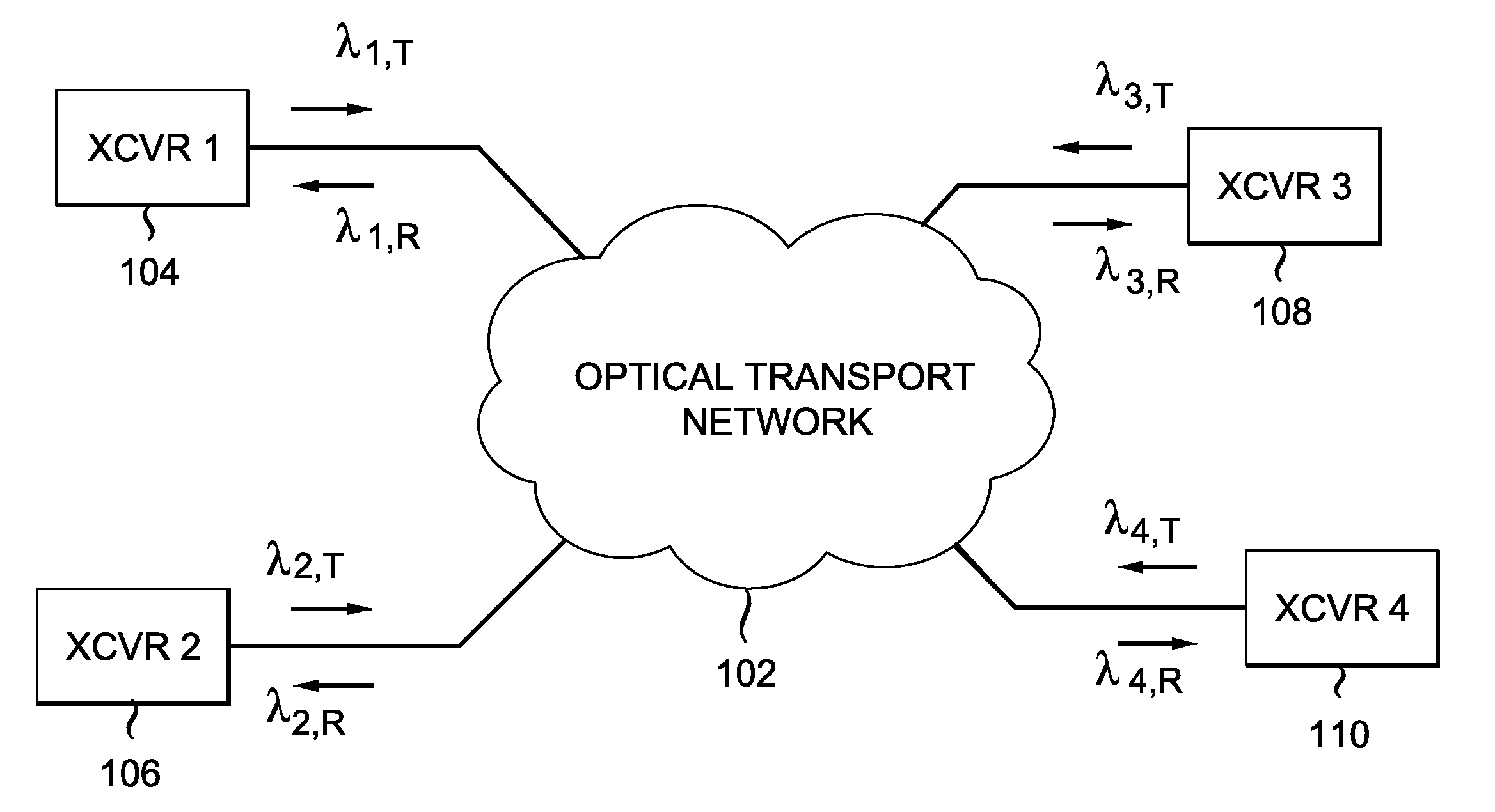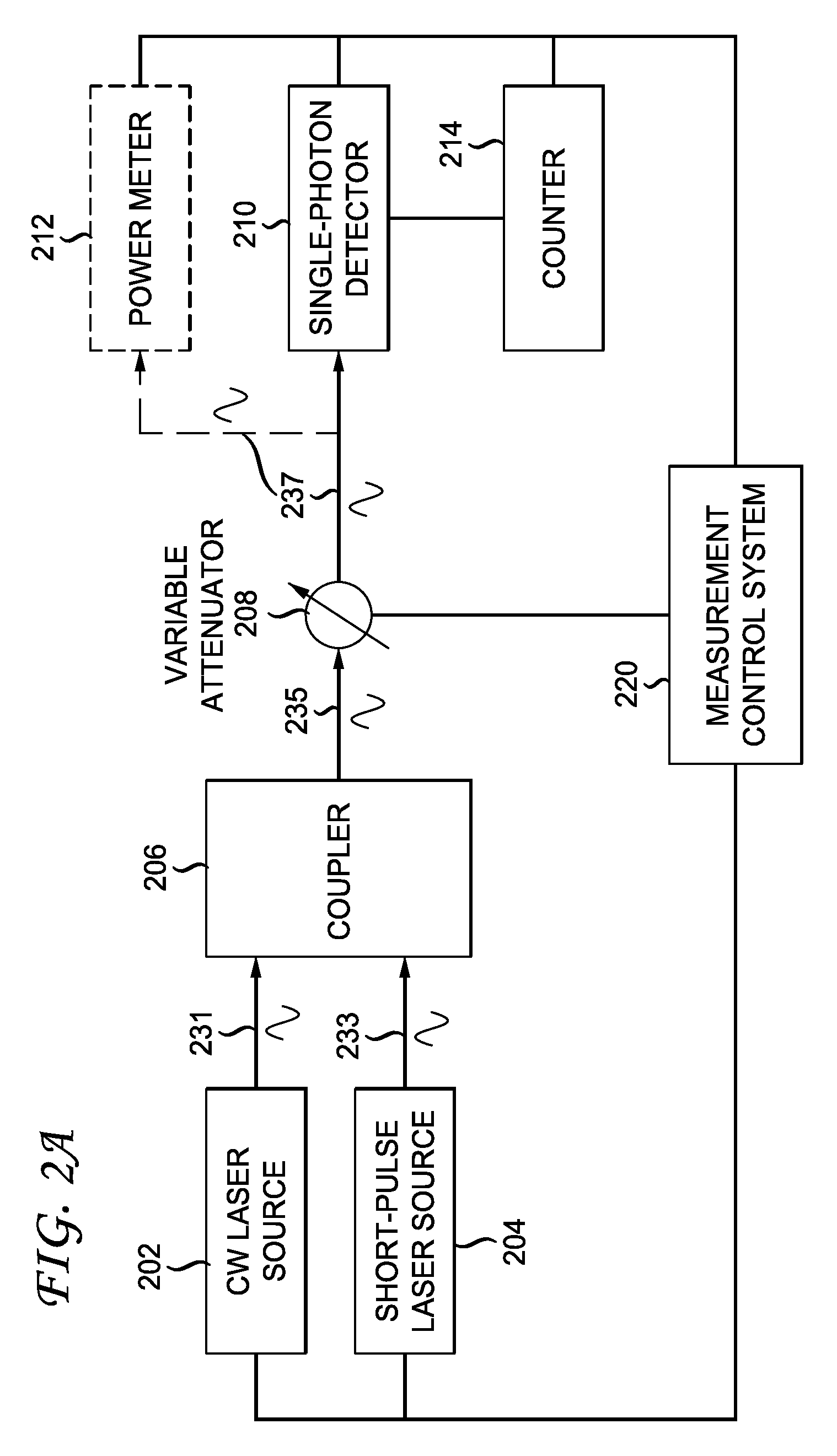Characterization of single-photon detectors using a source of photon pairs
a single-photon detector and photon pair technology, applied in the field of optical detectors, can solve the problems of low detector efficiency of spds, 10-30%, and large current measurement equipment, and achieve the effects of low cost, high cost, and bulky current measurement equipmen
- Summary
- Abstract
- Description
- Claims
- Application Information
AI Technical Summary
Benefits of technology
Problems solved by technology
Method used
Image
Examples
Embodiment Construction
[0022]FIG. 1 shows a schematic of a generic optical telecommunications system. Multiple optical transceivers (XCVRs) send and receive lightwave signals via optical transport network 102 (such as a fiberoptic network). Shown are four representative transceivers, referenced as XCVR 1104, XCVR 2106, XCVR 3108, and XCVR 4110, respectively. The receivers in the transceivers include single-photon detectors (SPDs). Each transceiver has a corresponding transmit wavelength (λn,T) and a corresponding receive wavelength (λn,R), where n=1−4.
[0023]FIG. 2A shows a dual-mode measurement system for measuring the operational parameters of a single-photon detector. The measurement system can compare measurements using a short-pulse laser source with measurements using a continuous wave (CW) laser source. Continuous wave laser source 202 transmits optical beam 231, and short-pulse laser source 204 transmits optical beam 233. Optical beam 231 and optical beam 233 are transmitted to coupler 206 [for exa...
PUM
 Login to View More
Login to View More Abstract
Description
Claims
Application Information
 Login to View More
Login to View More - R&D
- Intellectual Property
- Life Sciences
- Materials
- Tech Scout
- Unparalleled Data Quality
- Higher Quality Content
- 60% Fewer Hallucinations
Browse by: Latest US Patents, China's latest patents, Technical Efficacy Thesaurus, Application Domain, Technology Topic, Popular Technical Reports.
© 2025 PatSnap. All rights reserved.Legal|Privacy policy|Modern Slavery Act Transparency Statement|Sitemap|About US| Contact US: help@patsnap.com



